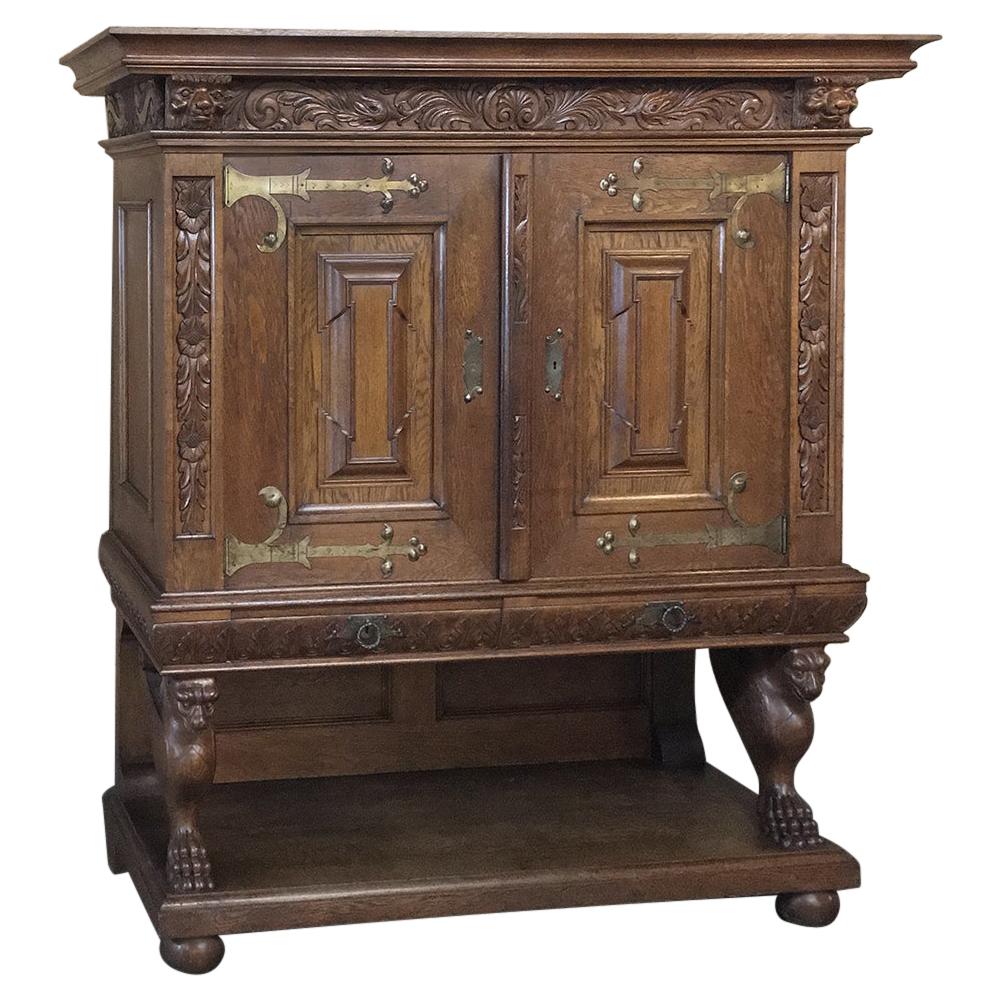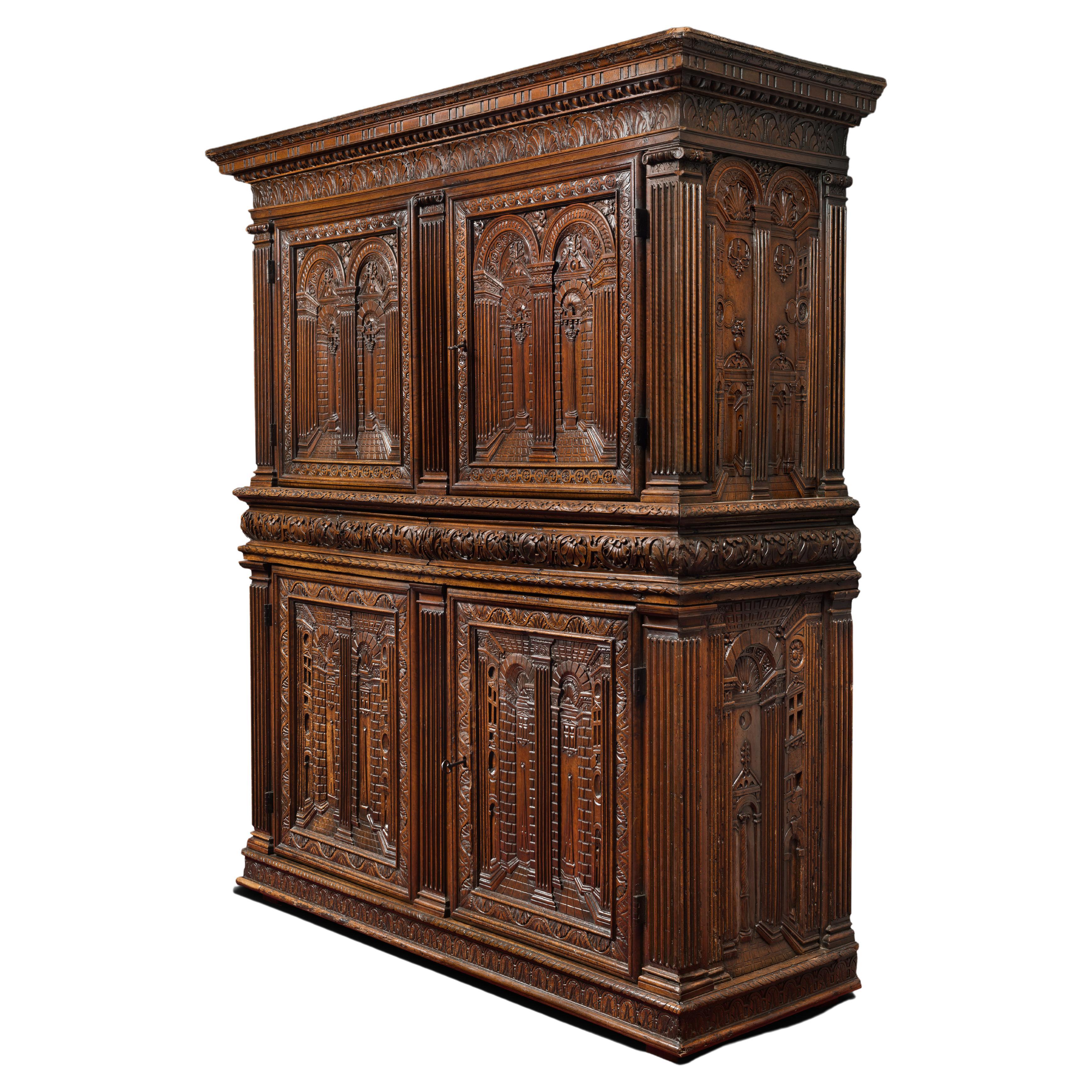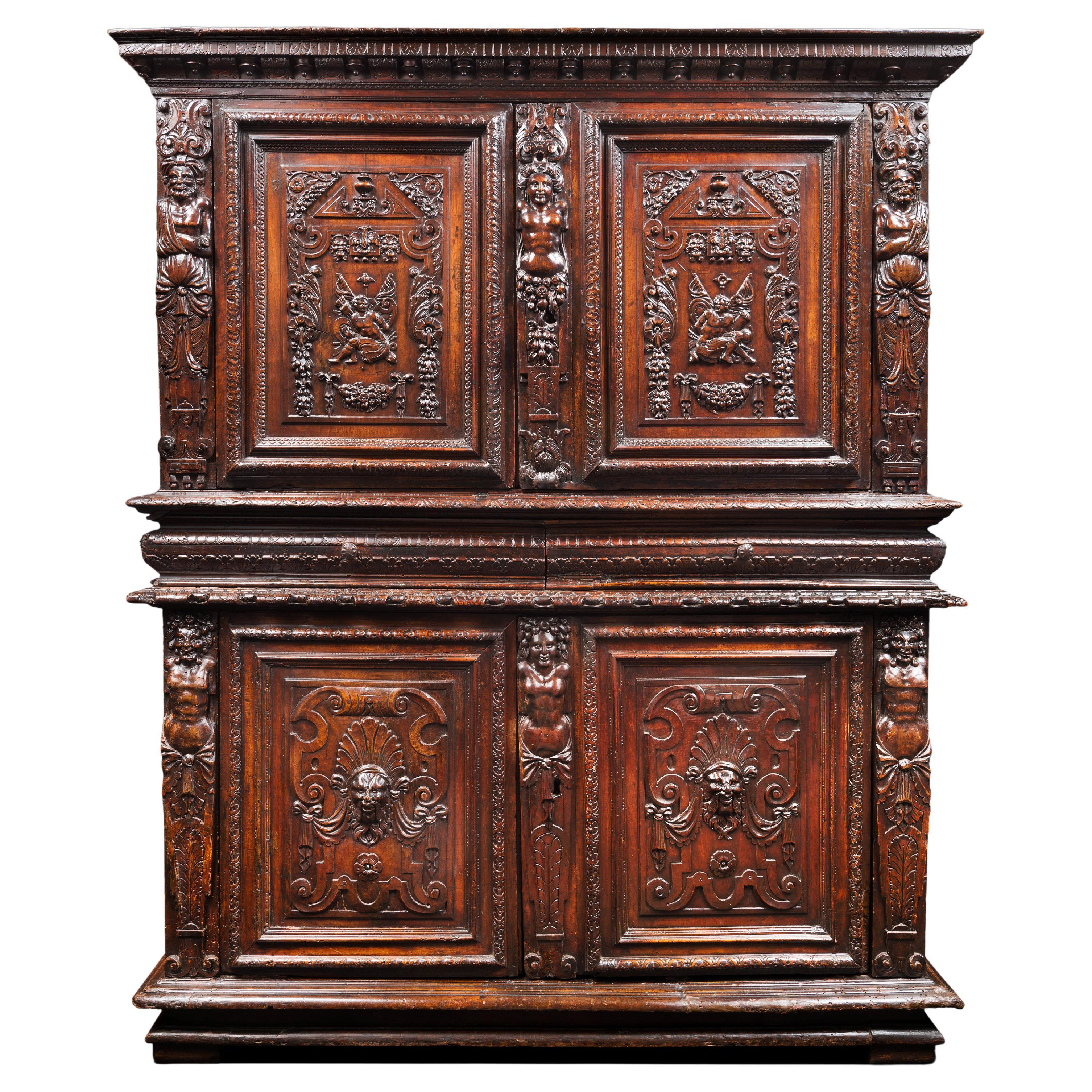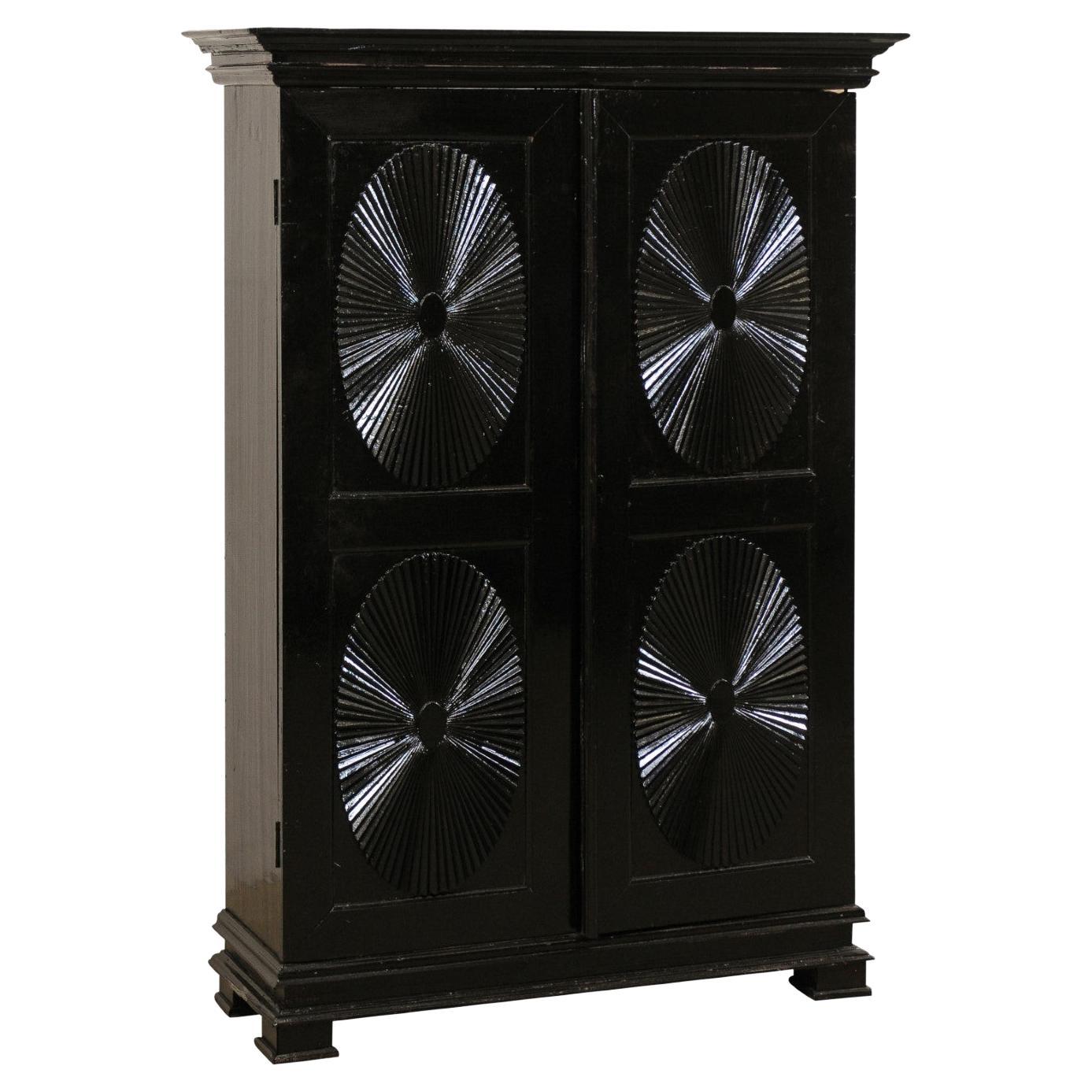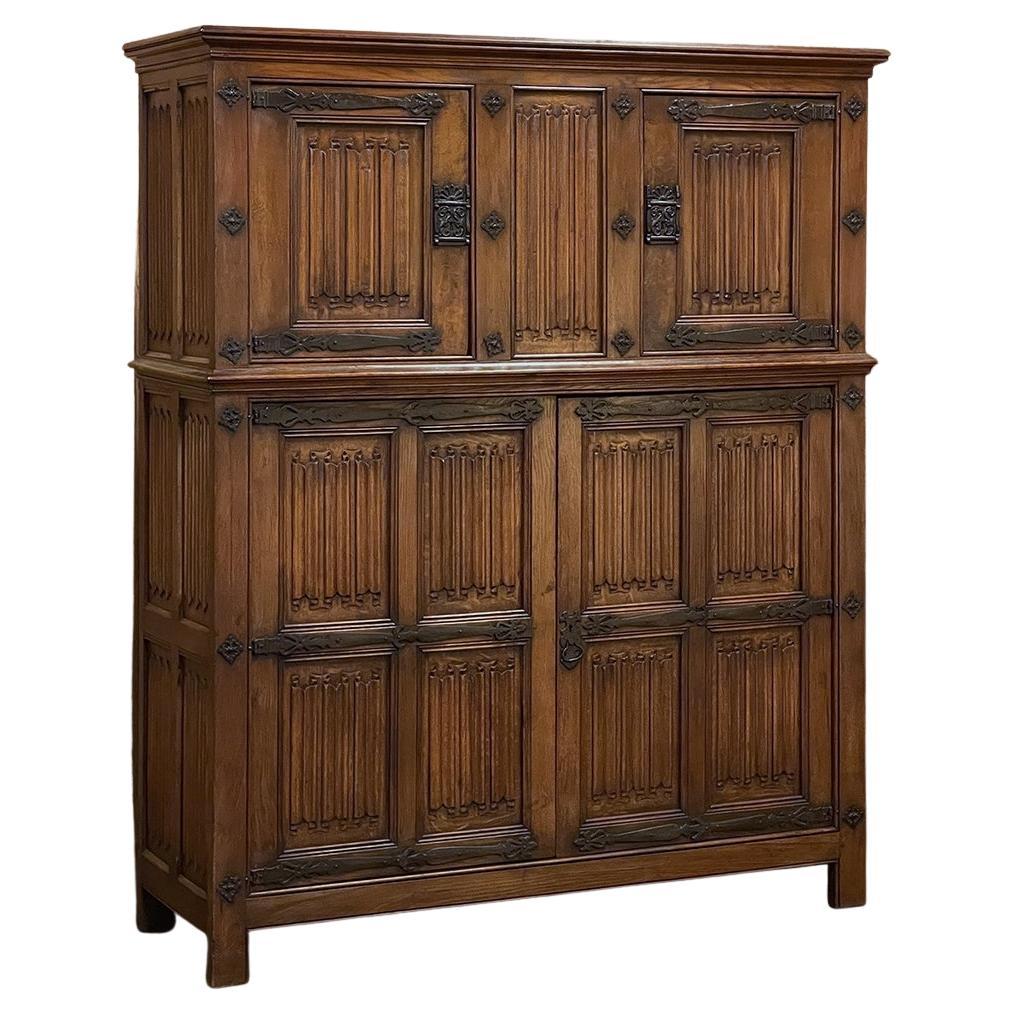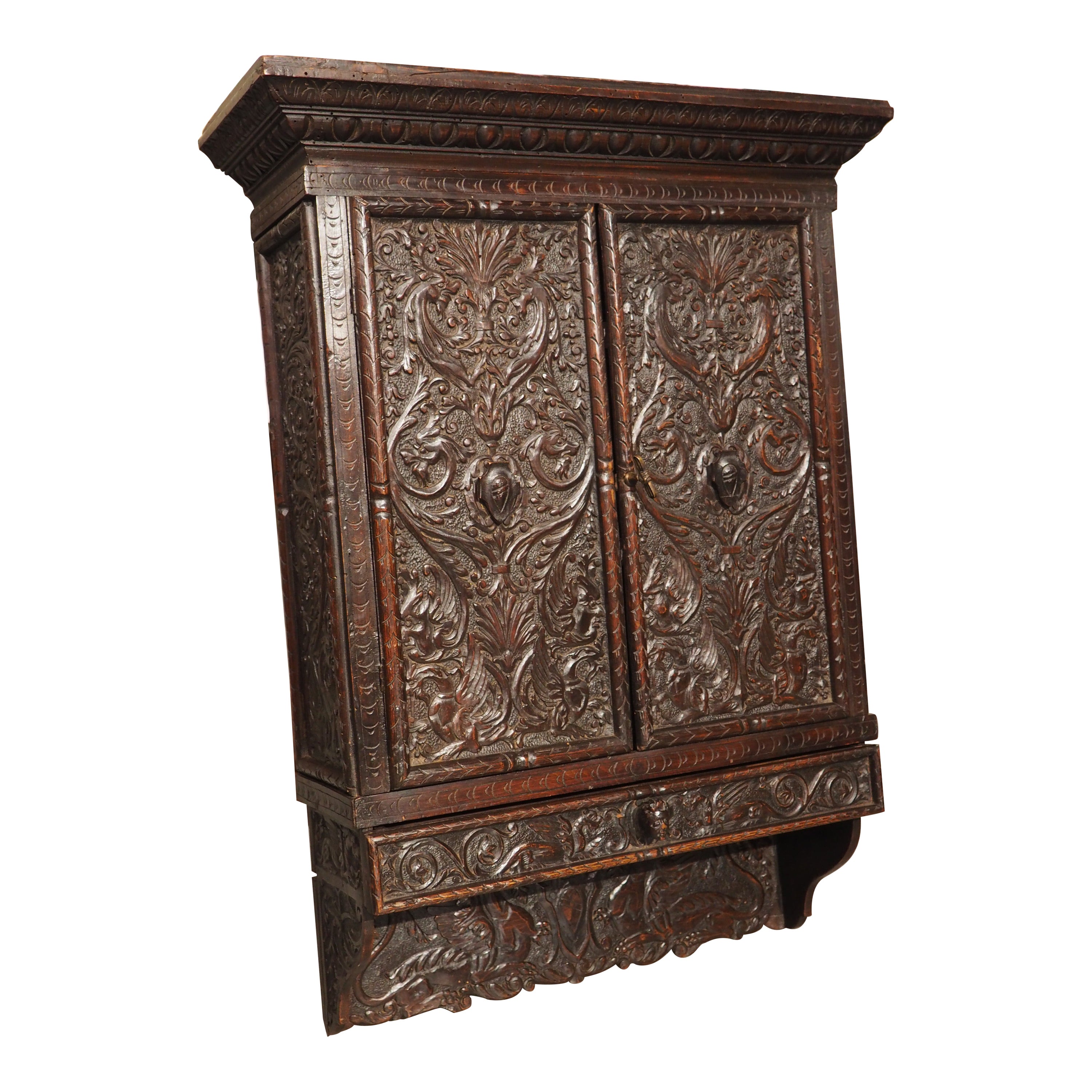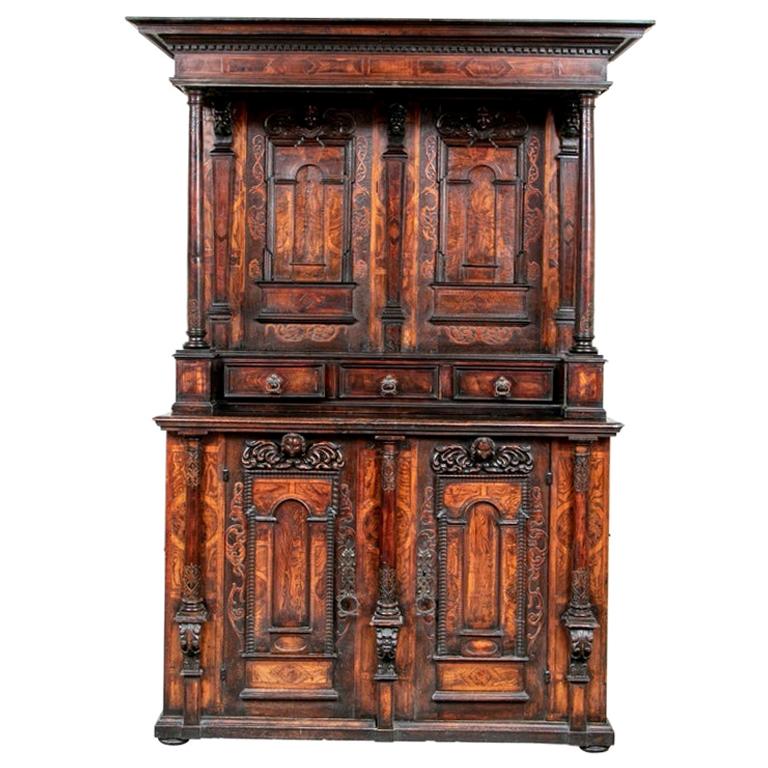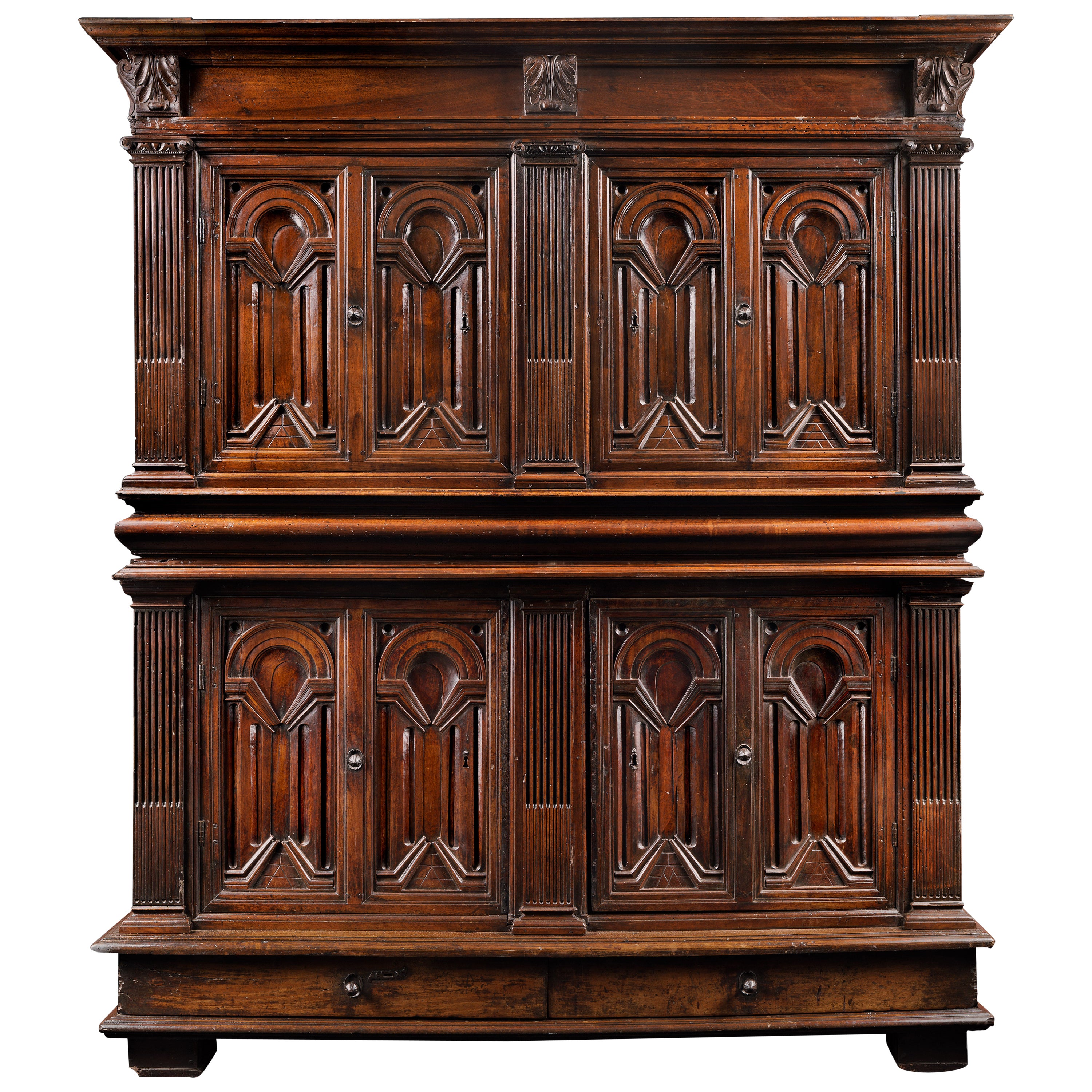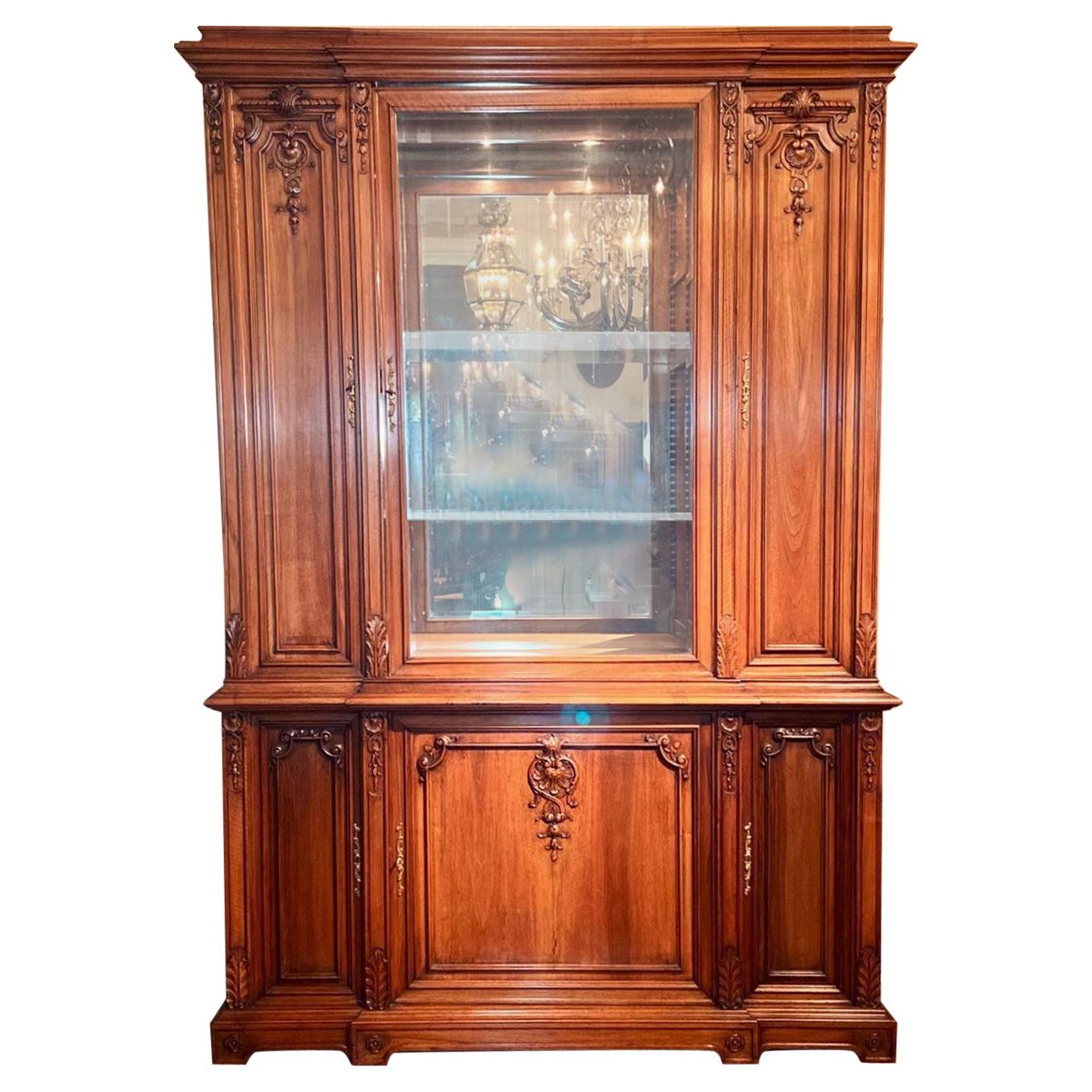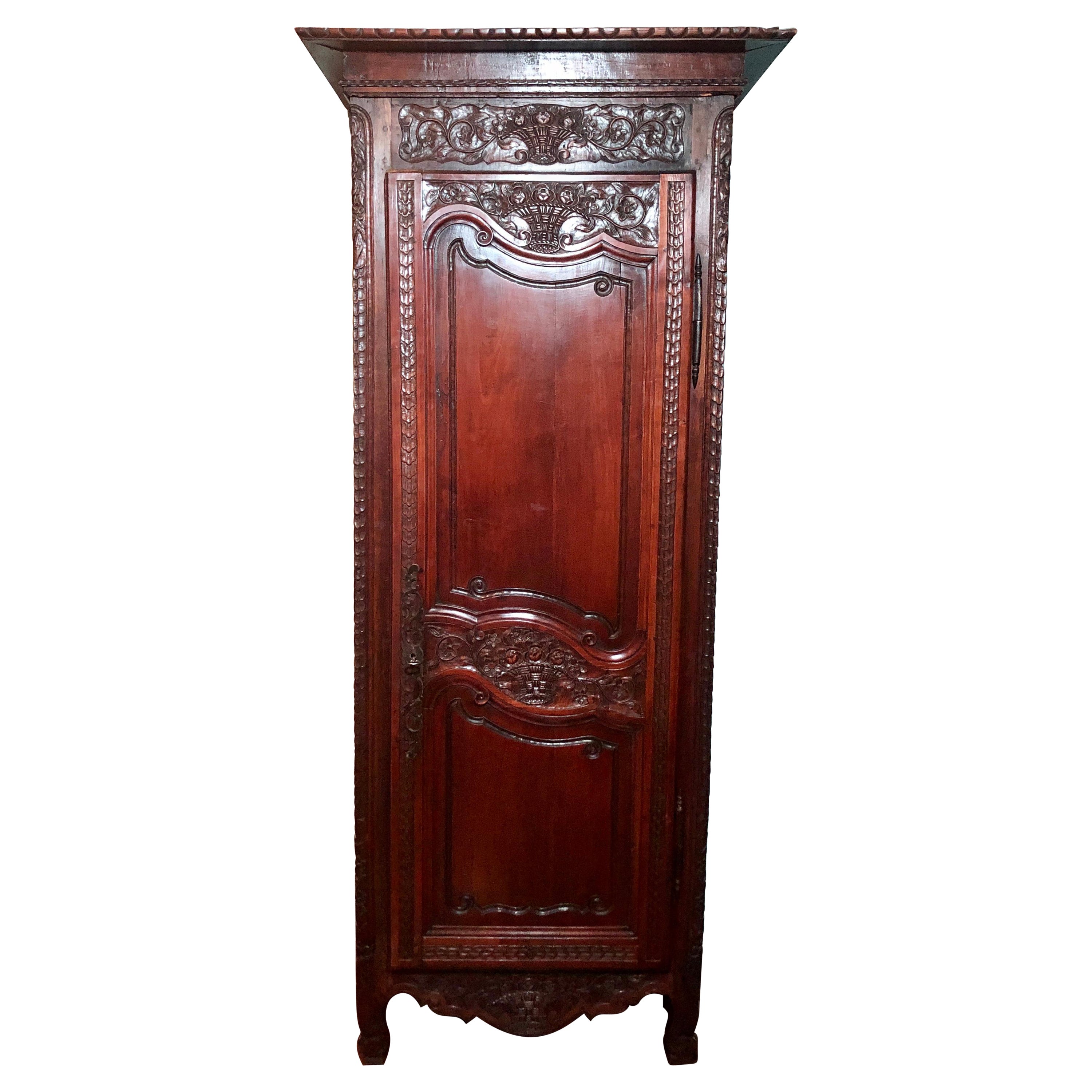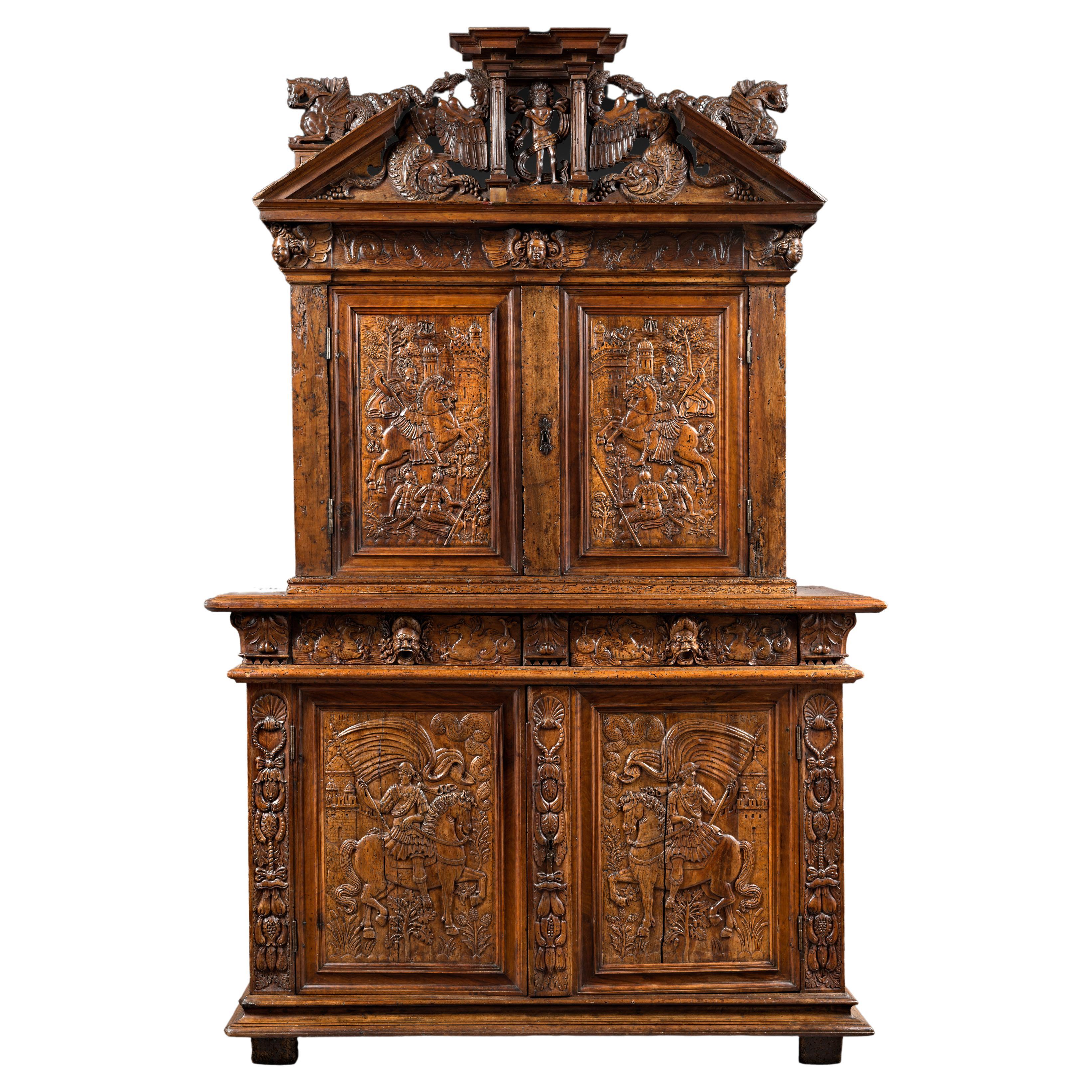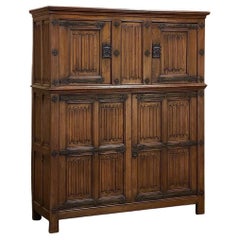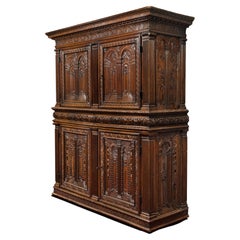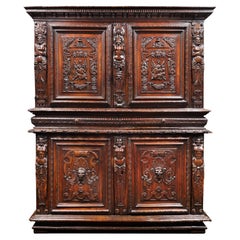
Antique French Renaissance Raised Cabinet
View Similar Items
Want more images or videos?
Request additional images or videos from the seller
1 of 13
Antique French Renaissance Raised Cabinet
About the Item
- Dimensions:Height: 70.5 in (179.07 cm)Width: 44 in (111.76 cm)Depth: 20.5 in (52.07 cm)
- Style:Renaissance (In the Style Of)
- Materials and Techniques:
- Place of Origin:
- Period:
- Date of Manufacture:Early 1900s
- Condition:Wear consistent with age and use. Excellent Hand-Curated Condition! Hand-detailed & hand-finished by our expert in-house staff. Located in our 25,000 square foot Dallas Design District showroom, NOT our flagship 25,000 square foot Baton Rouge showroom.
- Seller Location:Dallas, TX
- Reference Number:Seller: 2903-8514621stDibs: LU926214404531
About the Seller
4.9
Vetted Seller
These experienced sellers undergo a comprehensive evaluation by our team of in-house experts.
Established in 1991
1stDibs seller since 2012
1,192 sales on 1stDibs
Typical response time: 1 hour
More From This SellerView All
- 19th Century Dutch Hand Carved Renaissance Raised CabinetLocated in Dallas, TX19th century Dutch hand carved Renaissance raised cabinet was rendered from dense, old-growth quarter sawn oak, examples of which are on displa...Category
Antique Mid-19th Century Dutch Renaissance Revival Wardrobes and Armoires
MaterialsSteel
$4,784 Sale Price20% Off - Antique French Gothic Wardrobe, CabinetLocated in Dallas, TXAntique French Gothic wardrobe ~ cabinet is an intriguing example of the style, with no less than 23 hand-carved linenfold panels combining with ...Category
Early 20th Century French Gothic Revival Wardrobes and Armoires
MaterialsIron
$3,984 Sale Price20% Off - Antique Neoclassical Pharmacy File CabinetLocated in Dallas, TXAntique Neoclassical Pharmacy file cabinet was used to store & organize medicines but could easily be adapted to organize any small items placing them at your fingertips! Taking up a...Category
Early 20th Century Belgian Neoclassical Revival Cabinets
MaterialsSteel
$3,184 Sale Price20% Off - 19th Century French Louis XIV Cabinet, Homme DeboutLocated in Dallas, TX19th century French Louis XIV cabinet ~ Homme Debout is a great choice for a cozy room, or even as an accent piece in a larger room! Four door...Category
Antique 1870s French Louis XIV Cabinets
MaterialsBrass
$1,584 Sale Price20% Off - Antique Rustic Gothic Petite Raised CabinetLocated in Dallas, TXAntique Rustic Gothic Petite Raised Cabinet is the perfect choice for a cozy home, a small niche, under the stairwell or anywhere a diminutive yet timelessly stylish cabinet works. ...Category
Early 20th Century French Gothic Revival Cabinets
MaterialsSteel
- Antique Hand-Carved Gothic Revival Raised CabinetLocated in Dallas, TXAntique Hand-Carved Gothic Revival Raised Cabinet is of a type that was originally designed for easy access to frequently used items, and desirable in pretty much all rooms of the home and office. Hand-crafted from beautiful, solid oak, it features a classically inspired architecture that is lavished with the geometric and naturally inspired carved detail that defines the Gothic style, which has its origins in mid-12th century France...Category
Early 20th Century French Gothic Revival Cabinets
MaterialsSteel
$2,384 Sale Price20% Off
You May Also Like
- French Renaissance Cabinet with PerspectivesLocated in Saint-Ouen, FRThis Renaissance Cabinet reveals the great mastery of the Lyon workshops which are at the origin of its realization. Sculptors and wood-carvers worked here in symbiosis to express an...Category
Antique 16th Century French Renaissance Cabinets
MaterialsWalnut
- Important Renaissance Cabinet from Lyon 'France' with a Decor of PerspectivesLocated in Saint-Ouen, FRAs soon as 1540 France's second Renaissance is in the making, intimately linked to the rediscovery of the Antique world. The development of the printing and engraving industry allows the spread of artworks and models in many cities and countries. The Italian influence can be perceived in every artistic field. While the French king entrust the most talented Italian artists with major projects such as Il Rosso or Primaticcio in Fontainebleau, French artists also travel to Italy to form themselves to this new style. In Italy they get acquainted with the work of Leo Battista Alberti the first to theorize perspective (De Pictura, 1435-36) and architecture (De re oedificatoria, 1541). Those two publications would have a revolutionary impact on arts. Furniture is marked by the work of the most famous Italian architects of the time as well as French architects. Indeed Philibert de l'Orme competes with Alberti and by the end of his life publishes several treaties including one devoted to a theory of architecture (1567). Unfortunately he would not live to complete the second volume. In this treaty he expresses his interest for mathematical norms applied to architecture, copied from the Antique. His journeys in Italy allowed him to accumulate the most sophisticated references. Jean Bullant, another architect of great talent also theorizes his practice. He establishes rules characterizing Greco-Roman art staying faithful to Vitruvius. Following this new inspiration the structure of furniture evolves. From then on appear columns, capitals, cornices, friezes and architraves. The ornamentation uses this inspiration as well with egg-and-dart, palm leaf and rose adorning the most beautiful pieces. In Lyon, crossroad where meet merchants from everywhere those new experiments are welcomed. Lyon florishing printing industry allows the spreading of models and treaties essential to the artist's work. Thus the first publication of Vitruvius' De Architectura in France would be printed in Lyon in 1532. Artists from Lyon rediscover and familiarize themselves with the Antique knowledge very early. They adopt those new ideas and use them in their own creations. Lyon cabinet-makers re interpret Antique architecture and Italian Renaissance palaces to give their pieces a pure and harmonious architectural structure. Grooved pilasters are particularly favored. They are topped by capitals of diverse orders always respecting the sequencing with simpler ones for the lower levels and the richest ones on the higher levels. As for the ornamentation, one of the great distinctiveness of Lyon workshops remains the architectural perspective illusions, drawing inspiration from Tuscany. True masterpiece of the Second French Renaissance this important cabinet illustrates Lyon workshops' taste for fine Italian architecture inspired by Antiquity. An architectural perspective of great quality is treated in symmetry on each panel. This two-bodied cabinet without recess stands on four rectangular feet. The base comprises a molding, a palm leaf frieze and is bordered by a braid. The lower body is divided by three grooved pilasters with Tuscan capitals framing two door-leaves. The two panels are encircled by a moudled frame with palm leaves. They are finely carved with a decor of fantasized architecture depicting an Italian Renaissance palace erected symmetrically on each side of a grooved pilaster. On the ground floor a door opens through a stilted arch while the stories are opened with mullioned windows, dormers and occuli. Two large pegged-boss cladded pillars support the entablature enriched by a palm leaf frieze upon which stands an arch whose coffered intrados is centred by a rose. Behind this arch a pyramid appears, standing in front of a second facade with a window topped by a broken curvilinear pediment under a cul-de-four with a shell. The checker flooring gives depth to the low-reliefs creating vanishing points structuring the panels and guiding the eye of the observer. A thin laurel braid highlights the belt of the cabinet where are located two drawers. Their facades are adorned by palm leaves in hoops. The upper body is encircled with palm leaves. The same ternary division as in the lower body appears. However, the pilasters are topped by Ionic capitals with volutes and egg-and-dart. The door-leaves are framed with flowers. On the panels the artist has designed another architectural decor. On the foreground open two arches on top of grooved pilasters with rectangular capitals adorned with palm leaves. The arches are enriched with braids and the coffered intrados bears a decor of roses. The spandrels also bear a flower decor. In the background another arcature hosts a fluted grooved column topped with double basket acanthus capital, characteristic of Corinthian order. The triangular pediment is interrupted by a choux bourguignon. A large cornice crowns the cabinet. It stands on pilasters and forms an entablature comprising a palm leaf frieze and an egg-and-dart, triglyph and palm leaf cornice. The cabinet's sides have also been carefully considered. The lower body's panels are enriched with an arch rising above a broken pediment portico hosting a twisted column. Flowers garnish the spandrels. An architectural facade completes the decor. The upper body's panels present two arches supported by a facade opened with dormers and mullioned windows as well as cartouches (one bears the inscription 1580 dating the cabinet) suggesting the interior of an Italian Renaissance palace, confirmed by the chandeliers. The flooring leads our gaze to a second arch with a broken curvilinear pediment where stands a flower vase. This arch opens onto a perspective of another facade along a road. Inside the cabinet, on the lower body door-leaves appear two designs. On the right door is depicted a Crucifixion. Saint Mary and Saint John flank the Christ on the cross. In the bottom part is inscribed « Dure uiator abis nihil haec spectacula curas / Pendenti cum sis unica cura Deo. / Tota suo moriente dolet natura Magistro. / Nil qui solus eras caussa dolenda doles. ». The signature [Christoff Swartz Monachiensis pinx[it] / Ioa[nnes] Sadeler sculp[it]] tells us it was made by Johan Sadeler I (1550-1600) after Christoph Schwartz (1548-1592). This engraving belongs to an ensemble depicting the Passion of Christ Johan Sadeler executed in 1589 after an altar piece painted by Christoph Schwartz for the private chapel of Renée of Loraine, wife of Duke William V of Bavaria. This altar piece made of nine copper panels has been destroyed during the 19th century. The Crucifixion panel once in the centre of the altar piece is the only one that survived and is today kept in Munich's Alte Pinakothek. On the left door appears Saint Francis receiving the stigmata. The inscription says : « Signastidomine Servum Tuum. Franciscum. Signis Redemptionis Nostrae ». This Renaissance cabinet with an architectural decor appearing as much in the structure faithful to Antique rules...Category
Antique 16th Century European Renaissance Cabinets
MaterialsWalnut
- French Renaissance ArmoireLocated in Saint-Ouen, FROriginal lock and key This piece of furniture shows no recess on its upper part. It opens with four folding-doors and two drawers within the belt. The key bears the date 1524 above cross motifs. Burgundy and Lyon regions subordinated themselves to architecture in a different manner than the other french schools. Rather than using particularly columns and pediments pieces of furniture from Lyon borrow architecture’s organization principles and rigorous designs. On the upper body a strong feeling of balance and symmetry appears with the folding doors reliefs. Swags of flowers and fruits held with knot cloth centered by a man seating on his arms. Here profiles, masks and chou de Bourgogne mingle with the structuring scrolls. The two lateral terms wear draperies and the goddess Diana in the center wears a belt of fruits similar to Hugue Sambin’s designs (Termes de Diane et de Venus, 1554, BNF). The two palm-leaves enriched drawers and the alternating scrolls belt balance the weight of the cornice with its alternatings consoles and tops. The lower body is also adorned by three terms with a feminine one in the center, all three are wearing fruits on their heads. The folding doors are centered upon a motif of cut cuirs by a mask in high relief. Wearing a feathered tiara...Category
Antique 16th Century French Renaissance Wardrobes and Armoires
MaterialsWalnut
$87,870 - Antique British Colonial Black Armoire Cabinet with Raised Oval-Panel DoorsLocated in Atlanta, GAA British Colonial decoratively paneled two-door storage cabinet from the turn of the 19th and 20th century. This antique cabinet from India features a pair o...Category
Early 20th Century Indian Cabinets
MaterialsWood
- Circa 1830, Italian, Walnut Wood Wall Cabinet in the Renaissance StyleLocated in Dallas, TXHand-carved in Italy, circa 1830, this walnut wall cabinet has numerous Renaissance style motifs. The details are quite amazing, with all available space utilized. Even the edges of ...Category
Antique 1830s Italian Renaissance Cabinets
MaterialsWood, Walnut
- Notable circa 17th Century Carved Walnut Two-Tiered Cabinet in Renaissance StyleLocated in Bridgeport, CTA large and impressive 17th century European cabinet. Made in two parts, both with elaborate carved decoration and burled panels and details. The upper cabinet with heavy overhanging...Category
Antique 17th Century European Renaissance Cabinets
MaterialsWood

